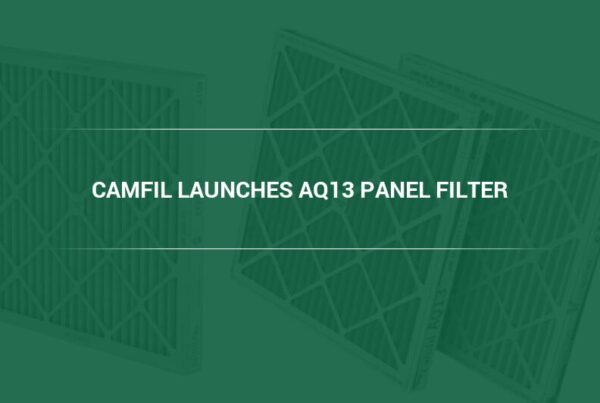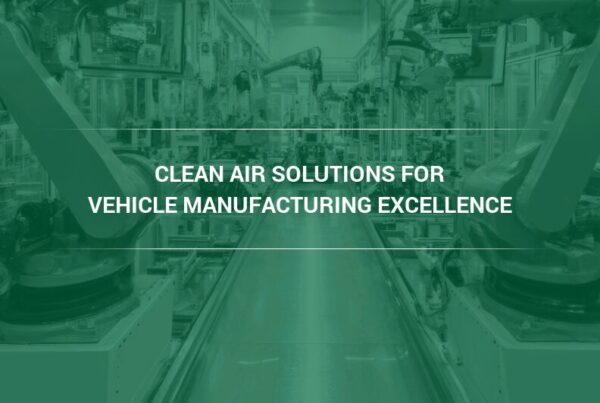It’s no secret that air pollution particles generated by cars, diesel trucks, factories, cooking stoves, coal-fired power plants, and forest fires are all major contributors to the dirty and unhealthy layer of smog that blankets several cities and regions around the world. It’s also one of the many factors driving demand for commercial high efficiency filters.
How Climate Change Is Driving Demand for Commercial High Efficiency Filters
“Internal combustion engines can be a source of indoor air pollution in offices, schools, hospitals, hotels, shopping centers, and stores especially where garages are attached,” points out Camfil USA’s Charlie Seyffer, Manager of Marketing & Technical Materials for commercial air filters and 37-year ASHRAE member and active committee participant. “In large cities with a high number of vehicles present, the ambient air normally contains a high number of particles and gases.”
Of course, there have been improvements, particularly over the last 50 years. The days of thick smog (also known as ozone pollution) choking out industrialized cities that came to define life in the 50s are finally behind us—a feat made possible by the passage of the Clean Air Act, which pushed for stricter air quality standards in the United States.
But air pollution is still a serious problem today, especially amid growing concerns about their connection to climate change.
The Same Emissions Captured by Commercial High Efficiency Air Filters Cause Climate Change
The combustion process that happens in cars, power plants and factories produces chemicals such as H2O, NO, NO2, CO, and CO2, as well as particulate matter (PM). Fortunately, these emissions can be removed by commercial high efficiency filters.
These pollutants, along with hydrocarbon gases, vapors, and volatile organic compounds (VOCs), however, are also key drivers of climate change. Methane and black carbon, in particular, are the top contributors to climate change after carbon dioxide.
Air pollutants affect the amount of heat radiation from the sun that is reflected or absorbed by the atmosphere. Some pollutants contribute to a greenhouse effect happening in the atmosphere, while others actually have the effect of blocking solar radiation and temporarily cooling the planet by a few degrees.
Either way, it’s causing unpredictable and unnatural changes to the world’s climate.
Climate Change Exacerbates Air Pollution, Making Commercial High Efficiency Air Filters More Important than Ever
Not only does air pollution contribute to climate change, but the shifts in temperature also create the environments conducive to smog formation, which in turn, causes air to stagnate and prevents dirty air from leaving an area. To protect people from exposure to pollution, government agencies around the world, including the EPA, have encouraged the installation of commercial high efficiency air filters.
For proof, one need only look at the levels of ozone pollution in the air, which saw a significant spike in 2014 to 2016—the same time the planet experienced some of the warmest years on record. And according to the American Lung Association’s 2018 State of the Air Report, worsening ozone pollution levels have exposed 134 million Americans to unhealthy, contaminated air.
While air pollution levels are unmistakable in major metropolitan cities such as New York City and Los Angeles, the problem has now reached smaller communities like Fresno and Bakersfield.
Are Air Purifiers Effective Against Air Pollution?
While New York City and Los Angeles have made great strides in improving air quality in recent years, they still have a long way to go before making the air in their respective cities completely safe to breathe. And while that happens, people are turning to HEPA air purifiers to protect their homes and buildings from outdoor air pollution.
Many people make the mistake of believing that the solution to poor air quality outdoors is by spending more time indoors. This approach, however, completely ignores the fact that outside air can still enter a building through cracks on the walls, floors, and ceilings, as well as its ventilation system, hence the need for a filtration system.
Isn’t This What HVAC Air Filters Are For?
Not at all. HVAC air filters are designed to protect the performance and efficiency of the HVAC unit, not the people in the room. The paper filters that come with a furnace or air conditioner capture dust and other debris that may cause the machine to work too hard or malfunction.
In contrast, a true high efficiency filter is designed to specifically capture the pollutants that can cause a host of health issues, such as:
- Lung cancer
- Asthma
- Allergies
- Emphysema
- Chronic bronchitis
In other words, HVAC air filters are for HVAC systems. High efficiency air filters are for the occupants of a home or building.
Choosing a High Efficiency Filter
Because not all air filtration systems are built the same way, it’s important to choose a high-quality, high efficiency filter. Although price is not necessarily a mark of quality, cheap filters tend to perform poorly. For best results, focus on high-performance air filters with a high clean air delivery rate (CADR) that matches your containment needs.
If you want to learn more about protecting your indoor quality with industrial air filters from Camfil USA, please click here.
Media Contact:
Lynne Laake
Camfil USA Air Filters
T: 888.599.6620
F: Friend Camfil USA on Facebook



